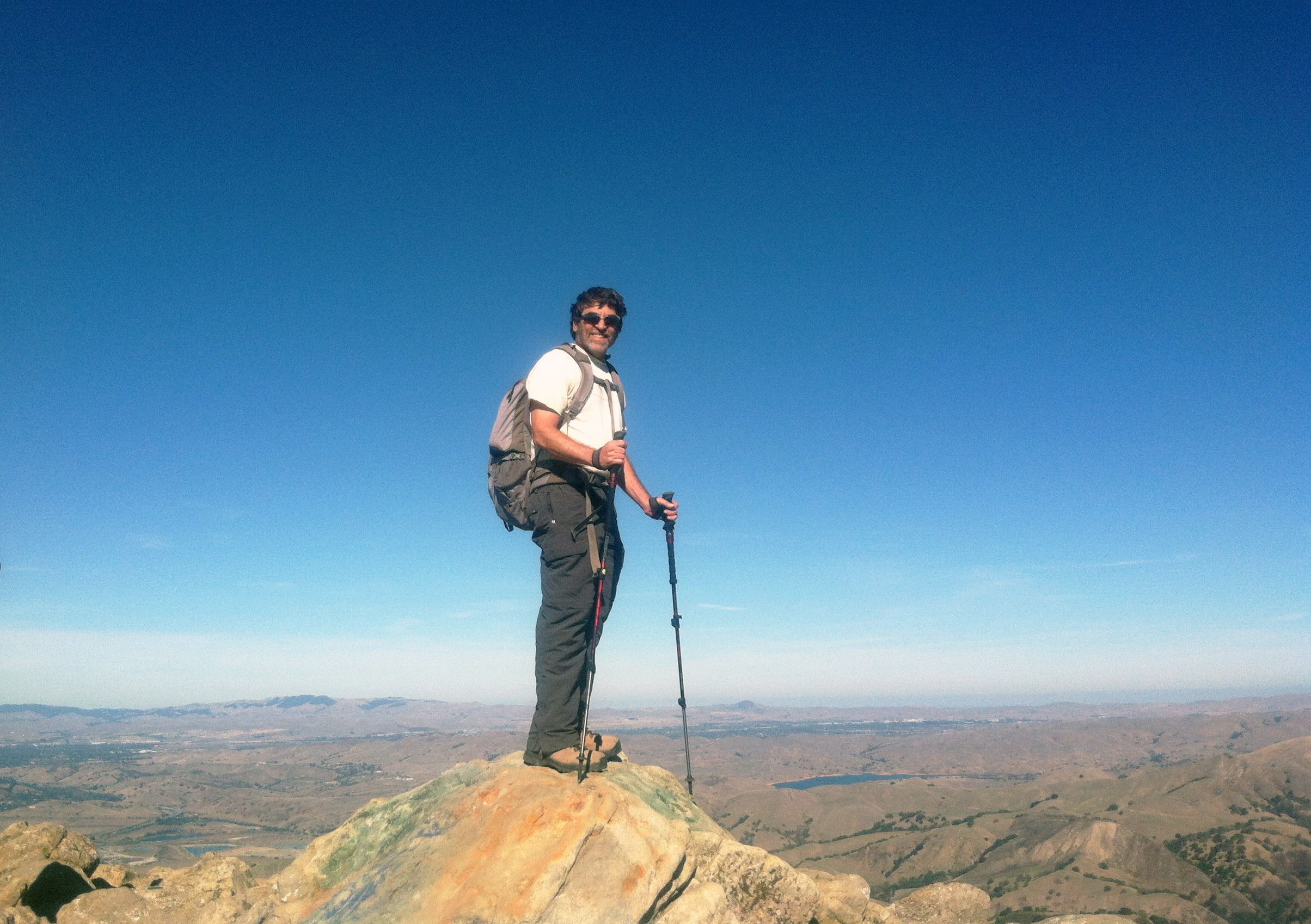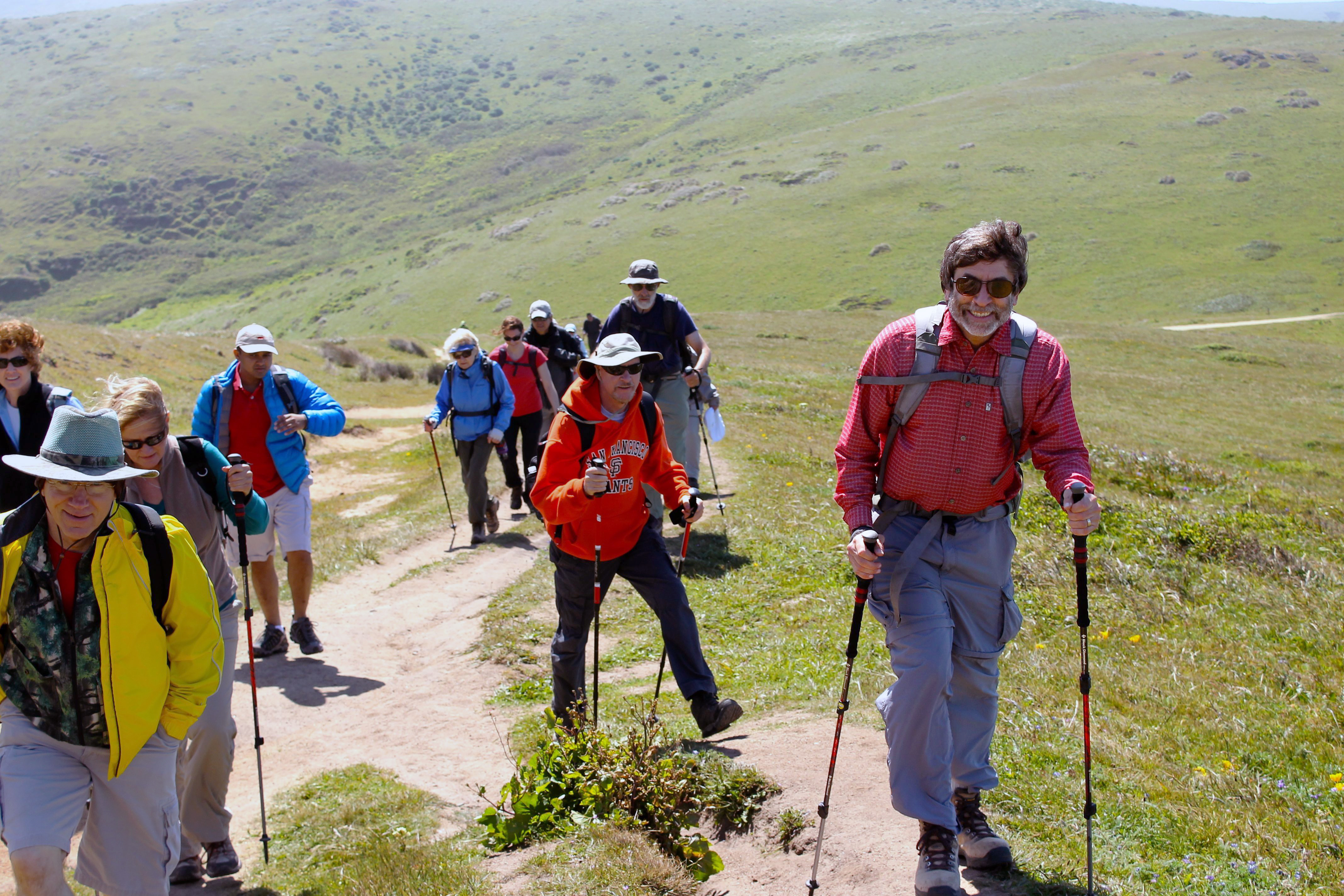By Karen Rosenbaum
 It was the aircraft carrier USS Midway that “carried” Steve Bakaley from the urban East to the California coast—and ultimately to his rewarding experiences with the Sierra Club and with wilderness.
It was the aircraft carrier USS Midway that “carried” Steve Bakaley from the urban East to the California coast—and ultimately to his rewarding experiences with the Sierra Club and with wilderness.
During his childhood and youth in metropolitan Philadelphia, Steve walked, biked, and accompanied his assistant Scoutmaster father on rambles in the woods. But he didn’t know then how short those trails were!
After earning a bachelor’s degree in chemical engineering at the University of Pennsylvania in 1971, Steve joined the Navy. This was, he is sure, one of the best decisions of his life. The Navy sent him to Athens, Georgia, trained him in data processing, then assigned him to the USS Midway, its home port at first in Alameda, later at Yokosuka, Japan. He was subsequently stationed in San Diego, part of the Fleet Material Support Office. Not only did the Navy afford him valuable professional training, Steve feels it helped him gain self-confidence, helped turn him from a follower to a leader.
It also introduced him to southern California. Upon his discharge from the Navy, he enrolled at San Diego State University, where, in 1978, he earned an MBA. He also joined the Sierra Club and explored San Diego beaches and nearby wild areas.
While working in information systems, Steve was recruited by the Raychem Corporation in Menlo Park. In 1982, he moved north to Fremont and began hiking in the Bay Area. In 1983, he joined a Sierra Singles hike to Alamere Falls, in the Point Reyes National Seashore. It took two and a half hours to drive to the meet-up point. When the leader announced the group would hike just two miles to Bass Lake, not to the falls, Steve and a few others grumbled. The leader allowed them to go on by themselves, but gave them a deadline to return. After his race-walking-to-the-falls experience, Steve complained to Earl Sawyer, coordinator of the Sierra Singles hikes. Earl suggested that Steve might like to lead hikes of his own.
Steve indeed wanted to lead hikes of his own. For five months he scouted potential sites. On a Club hike at Butano State Park, he asked leader Bob Solotar if he could “steal” the hike and lead it himself. Bob remembers this as the first time the two men—who would become hiking buddies, great friends, and committed fellow members of the chapter activities committee—met. (Steve remembers their first meeting on one of his Mount Diablo hikes to Mount Olympia!)
 Steve became a hike leader for Sierra Singles in January of 1985 when he led a group up Mission Peak and then over to the Weibel Winery. Soon one could find his name on the Club’s hike calendar every month. He worked out a year-long hike schedule, coordinating with John Calderwood, Jake van Akkeren, and others, to make sure there were hikes in the schedule almost every weekend.
Steve became a hike leader for Sierra Singles in January of 1985 when he led a group up Mission Peak and then over to the Weibel Winery. Soon one could find his name on the Club’s hike calendar every month. He worked out a year-long hike schedule, coordinating with John Calderwood, Jake van Akkeren, and others, to make sure there were hikes in the schedule almost every weekend.
In May of 1986, on a Sierra Singles hike he wasn’t leading, from Rock Springs to Alpine Lake, Steve met Marjie Miller, who would become his wife. Steve started to lead more strenuous hikes. Every hard hike he did, Marjie did—until the birth of their daughter Maya, in 1994. The year before that, Steve led 28 hikes—a personal record! The year after Maya’s birth, he took a sabbatical of sorts—and led just a few.
By then, Steve had begun working for the Lawrence Berkeley National Lab (the LBNL), a job which he has loved. In 1996, the family moved to Pleasant Hill. Not content with his Club contributions as a hike leader, Steve ran successfully for at-large member of the chapter Executive Committee, then started attending meetings of the activities and conservation committees. By 1998, he was chair of the activities committee—a position he would hold for 19 years. He presided over the quarterly meetings in which the committee oversaw the outings program, leader requirements, correlation with the national organization, and communications between local groups. Steve also, according to vice-chair Bob Solotar, went through his “repertoire of awful jokes,” some of which are, Bob is convinced, as old as Steve is—if not older.
At the end of June, Steve is retiring from LBNL, so it seemed also an appropriate time to retire from being chair of the activities committee. (He hopes to remain an active member of the committee indefinitely.) His hike fans are counting on his sticking around to lead them on the trails. “He is a wonderful leader,” says Diane Smith of the Mount Diablo group, “full of enthusiasm and information.” She remembers one hike last spring on Mount Diablo on which he identified more than 110 different wildflowers.
Mount Diablo hike veteran Jake Van Akkeren (“the Duke of Diablo”) applauds Steve’s “trail knowledge, concern for safety, and good-humored conversation.” Steve has, Jake says, “introduced hundreds of people to our parks—many of them becoming ‘regulars’ over the years.” Steve’s hiking troop knows “he’ll have picked out a perfect place for lunch, and, often as not, he’ll offer a post-hike dinner option.” Some ex-hikers come just for the dinners!
Outings coordinator Joel Berger, who describes Steve as “extremely conscientious and dedicated,” notes that Steve has attracted new people to Sierra Club activities by listing his hikes on the Meetup website and that Steve handles well the larger and more diverse groups that Meetup attracts. Joel adds that Steve has been “encouraging and mentoring new leaders so the Sierra Club tradition of environmental education through enjoyment of the natural world continues.”
Leading hikes in the Bay Area may soon require a commute because Steve and Marjie are contemplating a move to Santa Cruz, but Steve figures that retirement will allow him to lead more hikes than ever—somewhere. He has been interested in starting hikes for folks in the military. He may become a docent at a wilderness area. He maintains his interest in nature outreach programs. He is eager to see the epicenter of the 1989 Loma Prieta earthquake.
Steve has other activities in mind too. He played drums in elementary school, high school, college; in amateur orchestras, bands, and bar restaurants. He thinks he might revive his passion for percussion. He anticipates taking classes and learning new things. More important than travel, Steve says, is “engaging with people.” He is determined to continue his volunteer work—especially that which furthers the appreciation and welfare of the natural world.
The USS Midway, incidentally, after an unrivaled 47-year service, was decommissioned in 1992 and is now a museum in San Diego. One of her less well-known contributions to U.S. history is the part she played in turning Steve Bakaley into a Sierra Club leader.
Photos: Top – Steve on a hike at Mission Peak Regional Preserve in November 2012, courtesy Lee-Hwa Wang via Meetup; Middle – Steve (far right) on a Tomales bluff hike in April 2013, via Meetup; Bottom – Steve (center, in red) at Eagle Peak in Mount Diablo State Park in 2011, courtesy Steve Bakaley.